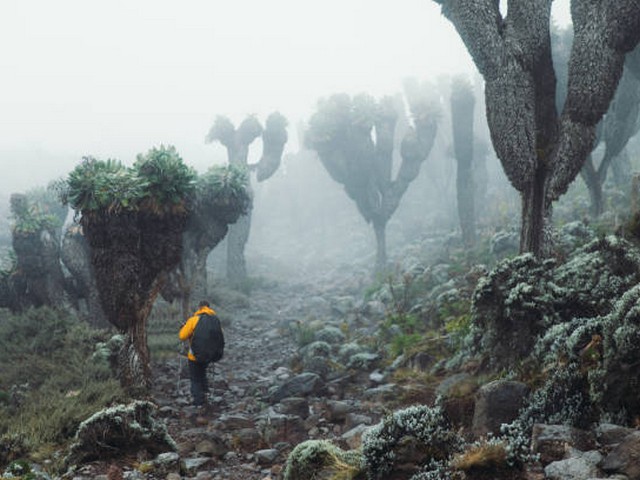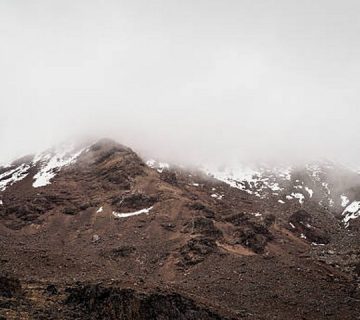The Essential Kilimanjaro Trekking Gear: What You Must Have for Your Adventure
Welcome to the Kilimanjaro Centre for Trekking and Ecotourism (KCTE), where dreams ascend amidst clouds and the spirit of adventure is alive! Whether you’re a seasoned climber or a curious novice eager to conquer the majestic Mount Kilimanjaro, you’ll need more than just enthusiasm. The right gear can be the difference between a successful summit and a challenging experience. In this blog, we’ll guide you through the must-have Kilimanjaro trekking gear, ensuring your journey is not only memorable but also safe.
Why the Right Gear Matters on Kilimanjaro
Climbing Kilimanjaro, the roof of Africa, is a formidable and exhilarating endeavor. The trek involves navigating through five distinct climate zones, ranging from tropical rainforests to the arctic summit. Each zone introduces its own set of challenges which can only be met with proper gear. Having the right equipment enhances your comfort, safety, and overall chance of success.
Clothing: Layering Up for Success
Base Layers
Your adventure begins with the basics. Moisture-wicking base layers are crucial as they keep you dry and comfortable by pulling sweat away from your skin. Look for materials like merino wool or synthetic fibers designed for thermal regulation in both cold and warm temperatures.
Insulation Layers
The temperatures on Kilimanjaro can plummet as low as -20°C. Insulating mid-layers such as fleece jackets or a light down jacket provide essential warmth without adding too much bulk.
Outer Layers
Protecting yourself from wind, rain, and snow is vital, especially in the higher altitudes. A high-quality, waterproof, and breathable hard shell jacket and pants are indispensable.
Footwear: Treading Wisely
Hiking Boots
A sturdy pair of waterproof hiking boots with good ankle support and aggressive grip is non-negotiable. Make sure they are well broken-in to avoid blisters.
Trekking Socks and Gaiters
Specialized trekking socks, paired with gaiters, help keep your feet warm and dry while preventing debris from entering your boots.
Headgear and Gloves
Hats and Neck Protection
A brimmed hat for sun protection and a thermal beanie for warmth are essential. Additionally, a neck gaiter or a scarf can provide versatile protection against the cold and wind.
Gloves
Pack a pair of lightweight gloves for lower elevations and insulated, waterproof gloves for the freezing temperatures of the summit night.
Daypack and Duffel Bag
Daypack
A comfortable, durable daypack around 25-35 liters will carry your essentials during daily hikes, including water, snacks, and extra clothing.
Duffel Bag
Your main gear will be carried by porters in a duffel bag. Ensure it is durable and waterproof, generally around 90 liters, to hold all your belongings securely.
Hydration and Nutrition
Water Bottles and Hydration Systems
Staying hydrated is critical. Insulated water bottles or a hydration bladder system are excellent for maintaining liquid intake in varying temperatures.
Snacks
Energy-dense, portable snacks like nuts, dried fruits, and energy bars will keep your motor running between meal stops.
Sleeping Gear
Sleeping Bag
A high-quality sleeping bag rated to at least -10°C is crucial for the cold nights, preferably with a comfort liner for extra warmth.
Sleeping Mat
A sleeping mat not only provides comfort against the rugged terrain but also insulates you from the cold ground.
Health and Safety
First Aid Kit
Include altitude sickness medication, plasters, bandages, and any personal medications in a compact first aid kit.
Sunscreen and Sunglasses
Protect yourself from UV rays with a broad-spectrum sunscreen and a pair of high-quality UV-blocking sunglasses.
Headlamp
A reliable headlamp with extra batteries is indispensable, especially for the pre-dawn summit attempt.
Navigation and Communication
Maps and GPS
While you will be guided by experienced professionals from KCTE, having personal maps and a GPS can enhance your understanding of the trek.
Two-way Radios
Communication devices such as two-way radios can be very helpful, especially in areas with spotty mobile reception.
Final Thoughts and Call-to-Action
Equipping yourself with the right gear is the first step towards a successful Kilimanjaro experience. Remember, every item you choose to bring along should serve a purpose towards enhancing your comfort, safety, and enjoyment throughout the trek.
Ready to begin your Kilimanjaro adventure with the best in the business? Book your climbing expedition with the Kilimanjaro Centre for Trekking and Ecotourism (KCTE) today. Our expert guides, comprehensive trek preparation, and commitment to ecotourism ensure that your journey will not only be successful but also unforgettable.
Frequently Asked Questions
What is the most important piece of gear for climbing Kilimanjaro?
The most critical pieces are proper footwear, adequate clothing layers, and a reliable sleeping bag, as they directly impact your comfort and ability to tackle various climates.
Can I rent gear instead of buying it?
Yes, KCTE offers high-quality rental options for major gear items like sleeping bags and insulated jackets. This can be a cost-effective option for those who do not frequently engage in cold-weather trekking.
How do I choose the right size for my gear?
Most outdoor gear shops offer expert fitting services. It’s essential, especially for boots and backpacks, to ensure they fit correctly to avoid discomfort during the trek.
Embrace the challenge, prepare thoroughly, and let Kilimanjaro unlock the spirit of adventure within you. With the right gear in your pack and KCTE at your side, the summit is within your reach!




